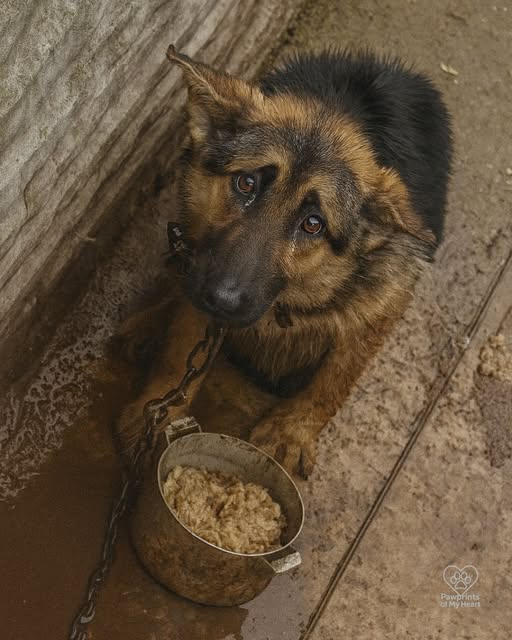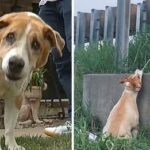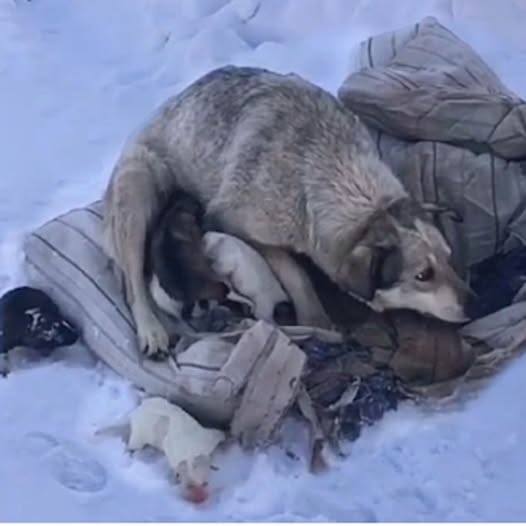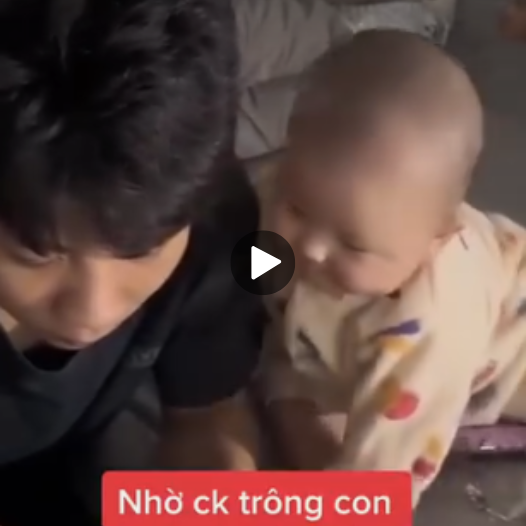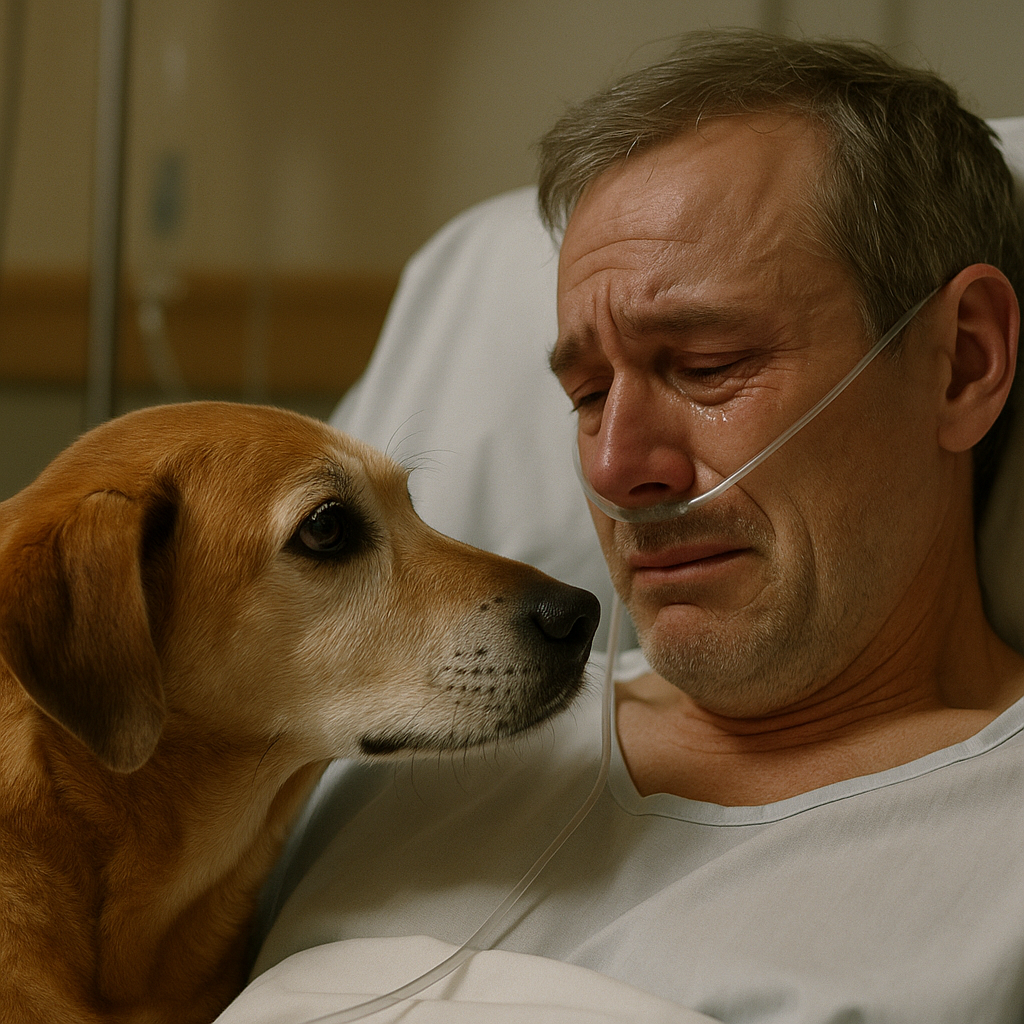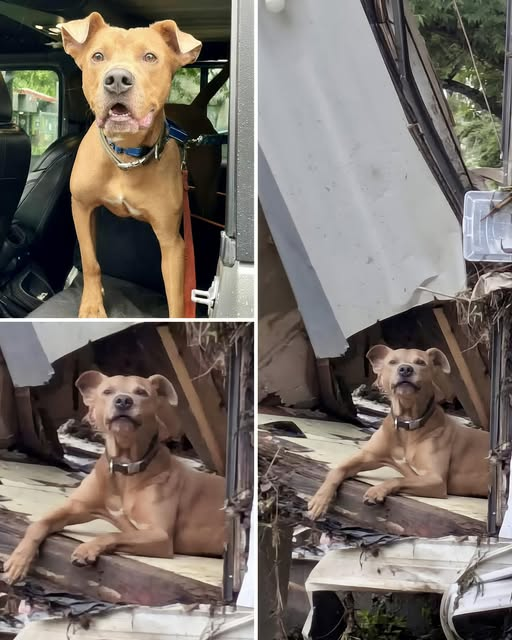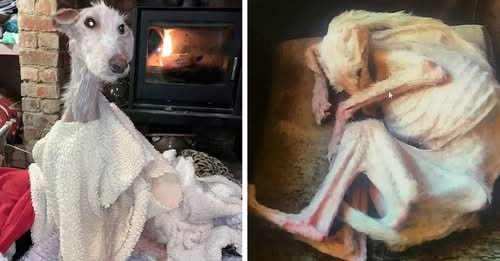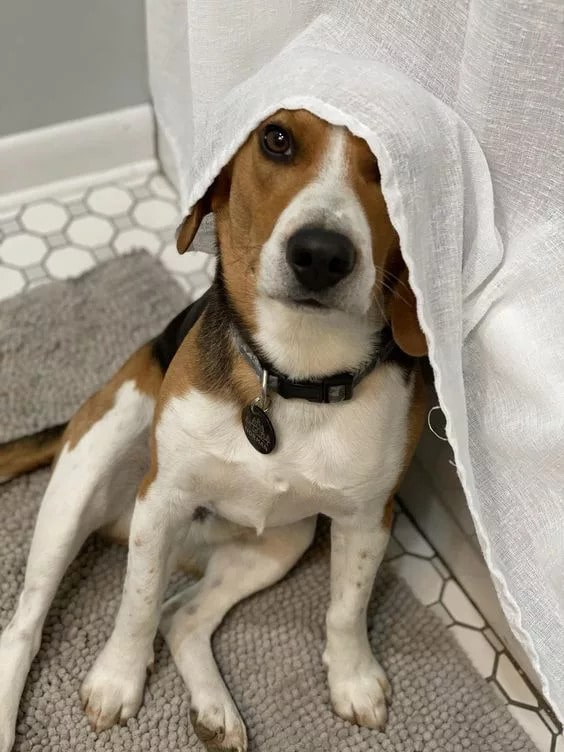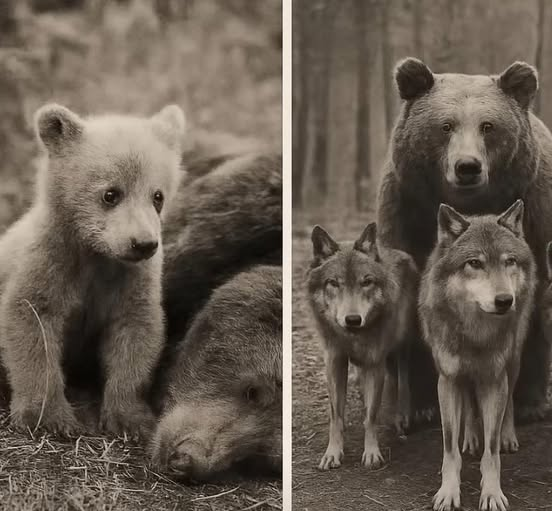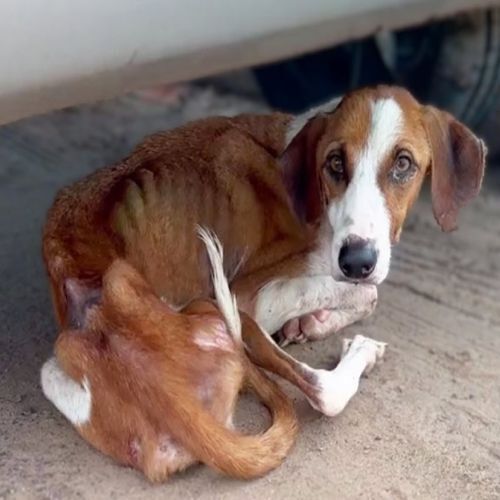His transformation wasn’t just physical—it was something deeper, something almost invisible at first. In the beginning, Alpha flinched at the slightest touch, wary of hands that once might have hurt him. The smallest noises—footsteps on the porch, the slam of a door—made him retreat, tail tucked tightly between trembling legs. But day by day, our patience began to chip away at the wall he had built around himself. The warmth of blankets, the gentle rhythm of feeding, and the quiet murmur of our voices started to reach a part of him that had long been dormant.
Meals became more than survival; they became ritual and comfort. At first, he ate cautiously, as if unsure whether it was safe to trust the food—or the hand offering it. But soon, he began to anticipate the sound of the kibble hitting the bowl, the scrape of the spoon against ceramic. There was a subtle wag, barely perceptible at first, and then, one morning, a full-body shake of excitement, a sign that he was beginning to understand that he was safe. Those small victories felt monumental.
Playtime was a different challenge. His broken leg made running painful, and his early attempts at chase were cautious and hesitant. He often stopped mid-stride, panting, looking back with eyes that seemed to question if he had done something wrong. But we celebrated each attempt—the tentative pawing at a ball, the first awkward leap to catch a frisbee. And then one day, he did it. He sprinted, limp and all, with a joy that radiated from every sinew of his body. Watching him run that first full lap around the yard, I realized that hope could be contagious. Alpha was teaching us, as much as we were teaching him.
Sleep, too, was a process. Nights were filled with restlessness, as if the past haunted him in dreams. Sometimes, he would rise suddenly, ears pricked, eyes wide, only to find comfort in a gentle hand rubbing his head or a whisper of reassurance. Gradually, his nights became peaceful. He learned to trust the quiet, to accept that the world could be a safe place. I remember one night, as winter winds rattled the windows, he curled completely into a ball at the foot of my bed, sighing with a relief that seemed almost human. That moment, more than any surgery or treatment, told me that he had begun to heal on the inside.
Socialization was another mountain to climb. For months, walks were brief and tentative. Encounters with other dogs would start with hesitation and a stiff stance. Yet patience and consistency worked wonders. With each passing week, Alpha’s confidence grew. He started to wag his tail at passing neighbors, sniffing at other dogs, even offering a tentative play bow. His transformation from fearful and broken to curious and affectionate was nothing short of miraculous. Strangers would stop to remark, “What a sweet dog,” unaware of the battles he had silently fought to earn their smiles.
One of the most profound lessons came unexpectedly. It was during a rainy afternoon when we brought him to the lake. At first, he hesitated at the water’s edge, pawing nervously at the muddy shore. But then, with a sudden, unexplainable bravery, he stepped in. Water splashed over his legs, droplets clinging to his fur, and he shook with delight. Then, as if realizing freedom was not just a word but a tangible experience, he ran along the shoreline, ears flapping, tail high, splashing into the shallow waves. Watching him embrace the moment, I felt a deep surge of gratitude—for resilience, for trust, for the unspoken courage that had carried him from neglect to life.
Alpha’s story also changed us in ways subtle but profound. We learned to notice the small things: the tilt of his head when he was curious, the gentle sigh when he settled into a favorite spot, the way his eyes met ours when he needed reassurance. We came to understand that healing is rarely instantaneous; it is measured in incremental steps, in moments of vulnerability met with patience. And we learned that love is not passive—it is active, requiring persistence, empathy, and a willingness to face pain with open hearts.
Even outside our home, Alpha became a symbol of transformation. Neighbors who had once walked past without a glance now stopped to smile, to reach down and scratch behind his ears, to comment on how far he had come. Children would squeal with delight as he gently approached, and adults would linger longer than necessary, captivated by the quiet courage of a dog who refused to remain broken. He reminded everyone that recovery is possible, that past suffering need not define the present, and that even the most forgotten souls can shine again.
Of course, challenges remained. His leg never fully regained strength, and occasional limps reminded us that scars, physical and emotional, remain. But these did not define him. Instead, they became a testament to his journey, a visible reminder of what he had endured and what he had overcome. Alpha taught us that imperfections are not liabilities; they are stories, badges of resilience worn proudly for those willing to see.
Alpha also became a companion in unexpected ways. There were mornings when his presence alone buoyed spirits, evenings when his soft nudge against a hand reminded us that we were never truly alone, and countless moments in between when his gaze spoke volumes about trust, love, and forgiveness. The bond we share is not merely of ownership or routine—it is an unspoken dialogue, a mutual recognition of survival and renewal.
Reflecting on Alpha’s journey, I realize that the impact of rescuing him extends far beyond his own life. He has inspired conversations, gestures of kindness, and a heightened awareness of the needs of those who cannot speak for themselves. Friends, family, and even strangers have reached out to learn how to help neglected animals, to offer support to shelters, and to advocate for those still suffering in silence. Alpha’s story became more than a personal triumph—it became a call to action, a reminder that every effort, no matter how small, can create ripples of change.
In quieter moments, when the house is still and the light fades into evening, Alpha curls in his favorite spot by the fireplace. His breathing slows, his body relaxes, and I see a contentment that had once seemed impossible. He has found a rhythm, a sense of belonging, and a joy that is unshakable. And in those moments, I am reminded again that no life is too damaged, no soul too weary, to be given another chance.
Alpha’s journey is a mosaic of struggle, patience, courage, and love. It is a testament to the idea that compassion can reshape destinies and that resilience can emerge from even the harshest conditions. His story is not unique—there are countless others waiting, just beyond the fences, just behind closed doors, their voices muted by neglect. But his life stands as proof that intervention, care, and unwavering dedication can transform despair into hope.
And so, Alpha runs—not because he is free of his past, but because he has learned to transcend it. He splashes, leaps, rests, and plays with a gratitude that is palpable, infecting all who come near him. He teaches that while scars may remain, they are not prisons; they are reminders of endurance, of the capacity to love and be loved, and of the undeniable truth that second chances can create miracles.
In the end, Alpha’s story is a celebration of life itself. A testament to resilience. A promise that no matter how small or overlooked a life may seem, the power of care, compassion, and commitment can turn even the most fragile spirit into one that soars. And every time I watch him chase the wind, ears flapping, paws pounding the earth with unrestrained joy, I am humbled. For Alpha is living proof that even after the deepest pain, happiness is not only possible—it is waiting, ready to be claimed by those brave enough to reach for it.
